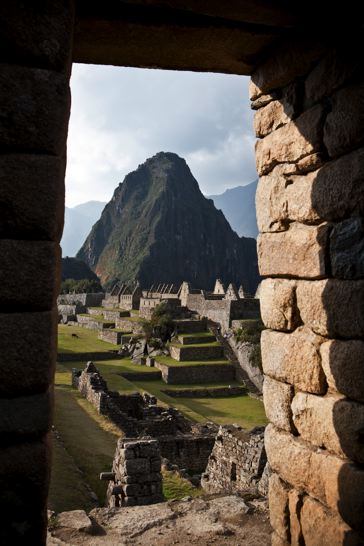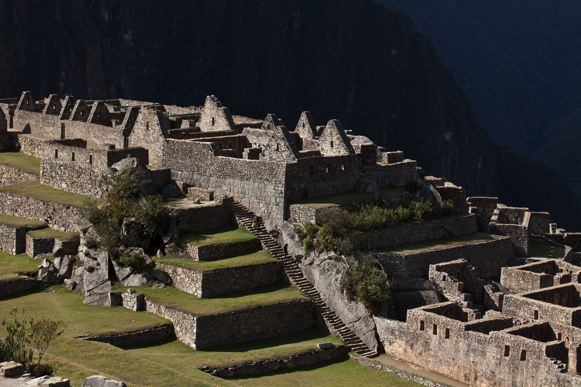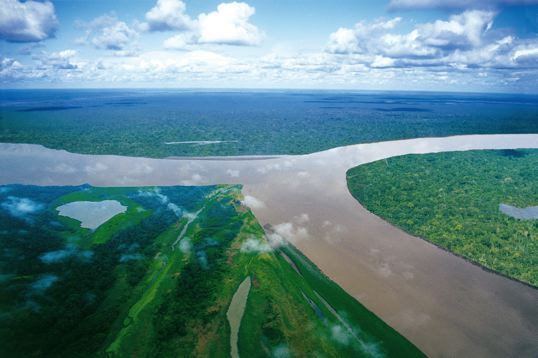Travel News
Exploring Machu Picchu and Peruvian Amazon Cruises
Machu Picchu, Ancient Incan City in Peru - photo credit: Gihan Tubbeh/PromPeru
Sometimes, a great adventure begins by finding something new. Other times, it comes from following the footsteps of history’s greatest adventurers.
Melinda Newman heads to the Peruvian Amazon on the eve of the 100th anniversary of the discovery of Machu Picchu and finds hidden rewards on and off Hiram Bingham’s historic path.
Peru may be best known for the “Lost City” that Hiram Bingham discovered on July 24, 1911, but limiting a trip to the ancient Incan terraces robs you of the chance to escape from the sea of tourists and experience the country’s natural beauty.
Getting there:
The most common way to reach Machu Picchu is by train. Depending on if you want a luxurious or rustic ride, there are a number of trains at varying prices.
Departing from Cusco to Machu Picchu, the four-hour trip takes you along the winding Urubamba River, past old copper mining paths and small family farms of burros, cows, oxen or sheep. Some trains have an open-air car, which local musicians transform into a sing-a-long and make-shift party spot.
Adventurous and fit people hike. Hiking the Inca Trail was once the only way into Machu Picchu. Now trekkers can challenge themselves with a level that fits their abilities. Some hike and camp for four days on the well-marked trail.
Others go with a travel company that drops them off for two six-hour day hikes and then picks them up for evenings at luxury hotels. Hiking through green valleys and Incan ruins, there are mountain climbs with peak elevation at around 13,000 feet.
Visiting the Ruins:
The Incans built the Lost City from 1200-1600. No more than 1,000 residents ever occupied the sacred spot at any one time. And women didn’t live there until 1536. The Spanish brought yellow fever and small pox, which eventually led to the demise of Machu Picchu. It’s estimated that the last warriors died in the mid-1700s.

Though located nearly 8,000 feet (2450 meters) above sea level, mountains still tower over Machu Picchu - photo credit: Renzo Giraldo/PromPeru
At Machu Picchu, you are free to walk among the tiered terraces and into the various stone structures. You can even run your hands along the ancient ruins. Each of the three main buildings, including the Temple of the Sun, are accessible by climbing short stone staircases, which are sometimes wobbly but easy to navigate. Once at the top, the view looks down on Machu Picchu’s terraces, the impassible valley and vast fields with grazing llamas, who are the only current residents of Machu Picchu.
The stone walls have held up miraculously well. About 70 percent of Machu Picchu is how the Incans left it, with the remaining 30 percent restored to the original condition. Each of the millions of stones has been catalogued and inventoried. Casting a long shadow is Huayna Picchu, a high mountain that overlooks Machu Picchu. Only 400 visitors, many of whom line up by 6 a.m., are allowed to climb its steep winding steps each day.
Though July is the official 100th anniversary of Machu Picchu’s rediscovery, UNESCO has objected to celebrations taking place at the ruins themselves for fear of damage. Most events are in surrounding areas. Commemorative events have taken place in Cusco throughout the year, but most are planned between July and the fall. Peruvian tourist officials expect visits to Machu Picchu to spike at least 15 percent through the fall.
Ruins to River:
Many people combine a visit to Machu Picchu with a cruise down the Amazon. The Peruvian Amazon covers 60 percent of the South American country, second only in size to the Brazilian Amazon.
Though there are different entry points to the river, I traveled to Nauta, where I boarded Delfin, a luxury cruise line that offers three or four day cruises through the 2-million acre Pacaya Samiria Reserve.
Two rivers, Maranon and Ucayali, both of which feed into the Amazon, frame the Reserve. They split off into various tributaries, including the Dorado River, which was made black by the tannic acid from the vegetation. Beyond cruising, the Dorado also offers a refreshingly Piranha-free swimming hole.
Traveling along the water offers broad a picture of life on the shores of the Amazon. Peru has more than 8,000 types of birds, 2,500 fish species and 400 mammals, the majority of which live in the rainforest. I saw wattled jacanas, horned screamers, herons, storks and kingfishers, who ingeniously poop in the water to attract the fish and then feast on the fish when they surface to eat the waste. We fished for piranha using sticks for fishing poles. Our guides were able to catch 18-inch long caimans by hand.
Along the river at night, there are caimans, bats, and squirrel monkeys. I had a rare sighting of a furry, reddish-brown Capybara, the world’s largest rodent, munching on the grass by the water front. The guides occasionally turned off the spotlight they used to find creatures to give us optimal time to stargaze.
During low water season, it’s possible to hike through the rainforest. During high water season, 80 percent of the forest is covered by water. Hiking through the forest you see the different trees that the Shamans and midwives have relied upon for centuries. By boiling the bark they make medicine to treat everything from parasites to asthma. Huge termite nests hang from many of the trees, which the shaman use to stop bleeding and as fish bait.
Early one morning on the river I encountered the most mystical of the indigenous species: the pink dolphin. Superstitions have helped keep the magical creatures safe as villagers believe that killing a pink dolphin will lead to a child being stillborn and that eating one will lead to impotence. The pink dolphin is very rare and has been on the endangered species list since 2002. The dolphins were particularly playful during our trip, coming tantalizingly close to our skiff and eagerly arcing above the water’s surface to show off their pink backs.
By Melinda Newman. Photos courtesy of PromPeru (top photo by Gihan Tubbeh/PromPeru). Melinda Newman is a freelance entertainment/cultural writer who has contributed to the Los Angeles Times, Washington Post, Christian Science Monitor, Billboard, Variety, AOL, MSN, Hitfix and a number of other outlets. She loves travel and has been to six continents. She has her suitcase packed and her passport in hand, ready for the next adventure.
Related links:















